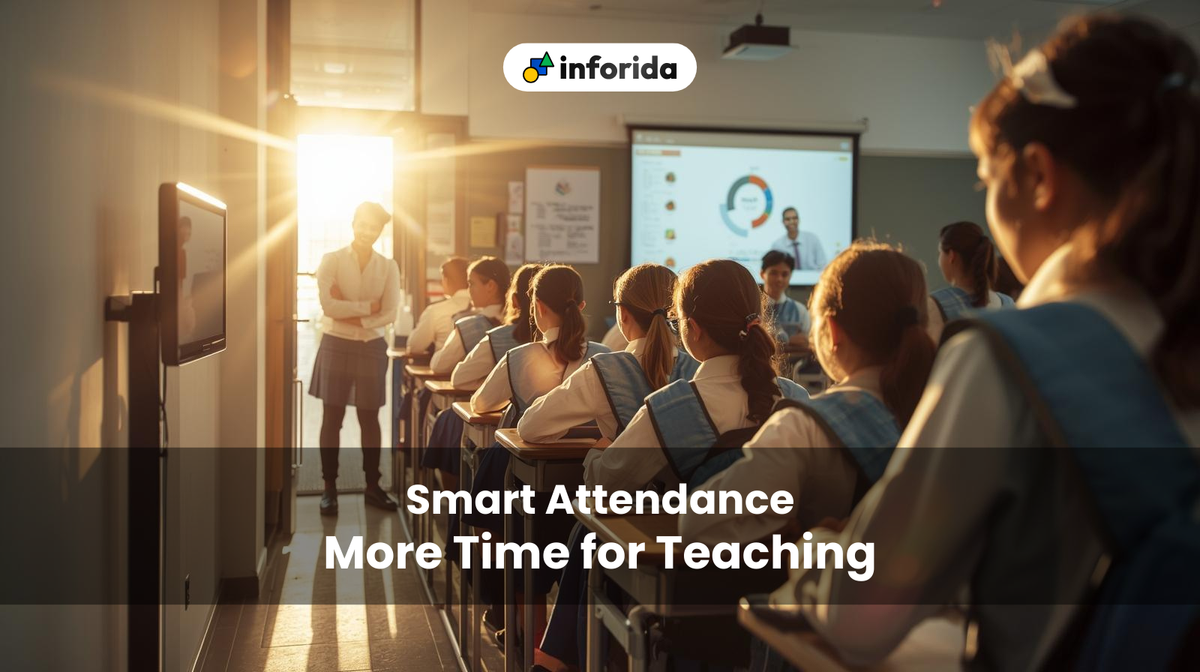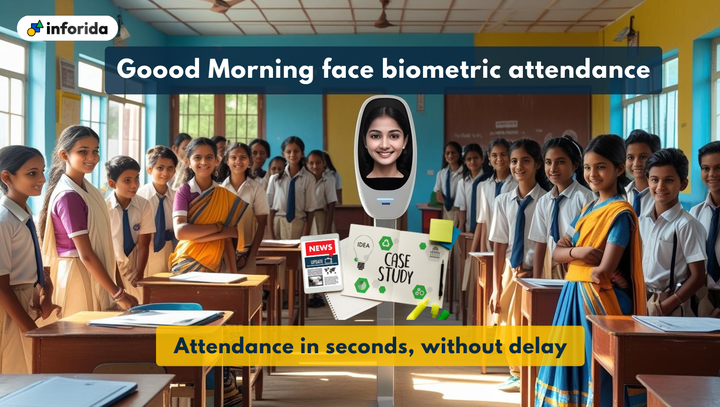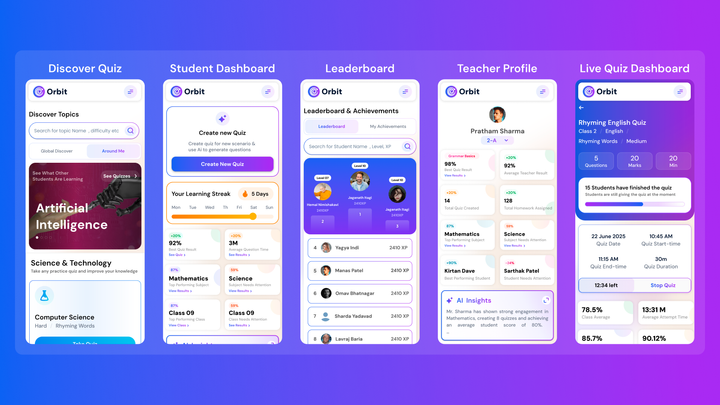Inforida’s Face-Biometric Attendance: Cutting Teacher Load and Going Green
Teachers in India lose hours each year to manual roll calls. Inforida’s face-biometric attendance changes that in seconds-saving time, improving accuracy, and even cutting paper waste. Here’s how this shift is already transforming classrooms.

Every morning in thousands of Indian schools, teachers still begin their day the same way—calling out names, ticking registers, chasing latecomers, and finally updating records by hand. It may seem like a small ritual, but those minutes add up. Over a year, it can mean dozens of teaching hours lost to admin.
Now, schools are starting to ask: why waste time on a process that technology can do instantly?
A Shift that’s Already Underway
In the past year, automated attendance has moved from pilot projects to state-wide rollouts. Telangana has introduced AI-powered facial recognition across more than 400 junior colleges, sending real-time attendance updates straight to parents on WhatsApp. In Indore, Devi Ahilya Vishwavidyalaya (DAVV) recently patented an AI tool that lets staff upload a classroom photo and get an instant attendance report. Meanwhile, Karnataka’s new “Nirantara” programme plans to tie student attendance with welfare schemes using face recognition and geotagging—though privacy groups have raised strong alarms.
Not every experiment has worked. In Pune, biometric scanners for teachers were recently scrapped after being called expensive and clunky. Instead, schools there are trying a simple geofencing mobile app. These examples show one thing clearly: schools everywhere are searching for attendance solutions that are accurate, fast, and sustainable.
Inforida’s Face-Biometric Edge
Inforida’s “Goood Morning” app takes the promise of automated attendance and makes it practical. Instead of clunky fingerprint scanners or error-prone registers, students and staff simply walk in, look at the camera, and attendance is logged instantly. Teachers don’t lose precious time at the start of class. Parents get notified if their child is absent. Administrators can see live data without chasing paper.
And then there’s the green side. Going paperless saves not just time, but thousands of sheets of paper each year. Schools using Inforida have reported both reduced admin costs and measurable environmental gains. It’s the kind of everyday sustainability that feels small in isolation but adds up across hundreds of institutions.
Balancing Convenience with Responsibility
Of course, facial recognition comes with responsibility. Parents and privacy experts have rightly asked: what happens to children’s data? Who stores it? How long is it kept? In Karnataka, 31 child rights and tech experts have already warned about risks if sensitive data isn’t handled properly.
Inforida’s stance is straightforward: collect only what’s needed, store it securely, encrypt it, and always seek parental consent. Schools can also provide alternatives, like ID cards-for families who aren’t comfortable with biometrics. Transparency builds trust, and without it, no technology is worth adopting.
Why this Matters Beyond Convenience
At its core, automated attendance is about giving time back to teachers and transparency to parents. A high school teacher doesn’t have to spend 10 minutes every class calling out names. An administrator doesn’t have to flip through dusty registers. And a parent doesn’t have to wonder if their child made it safely to school.
Inforida’s approach adds one more layer of sustainability. By eliminating paper registers and adopting a digital-first system, schools don’t just modernize admin. They also play a small but real part in reducing waste and protecting resources.
That’s the bigger story here: technology that isn’t just efficient, but thoughtful.
So yes, Inforida comes with a privacy note:
- Obtain parental consent before biometric collection.
- Keep data encrypted and local where possible.
- Allow opt-out or alternatives for sensitive users.
- Honor data retention limits under law.
Better care means better trust—and that matters.
If this shift toward smarter attendance sparked your curiosity, you’ll want to check out our latest story: NSF’s Big AI Education Move—and Why It Matters for Indian Classrooms.
FAQs
- What is face‑biometric attendance? An automated system that uses a camera to scan students’ faces and marks attendance instantly—no manual logs needed.
- How much time does it save? Everyday, manual roll-call eats away 5–10 minutes. Automated systems reclaim that; over a year, that adds up to tens of hours.
- Is facial recognition safe for kids? It’s becoming common, but safety hinges on consent, secure data storage, and compliance with India’s DPDP guidelines.
- What if the technology fails? Schools can offer fallbacks such as ID cards or manual entry—especially during outages or errors.
- Does Inforida need new hardware? No—it's designed for existing devices and dashboards, which keeps rollout cost-effective.
- Can parents access attendance data? Yes—automated alerts and dashboards are part of the package, improving school-home transparency.




